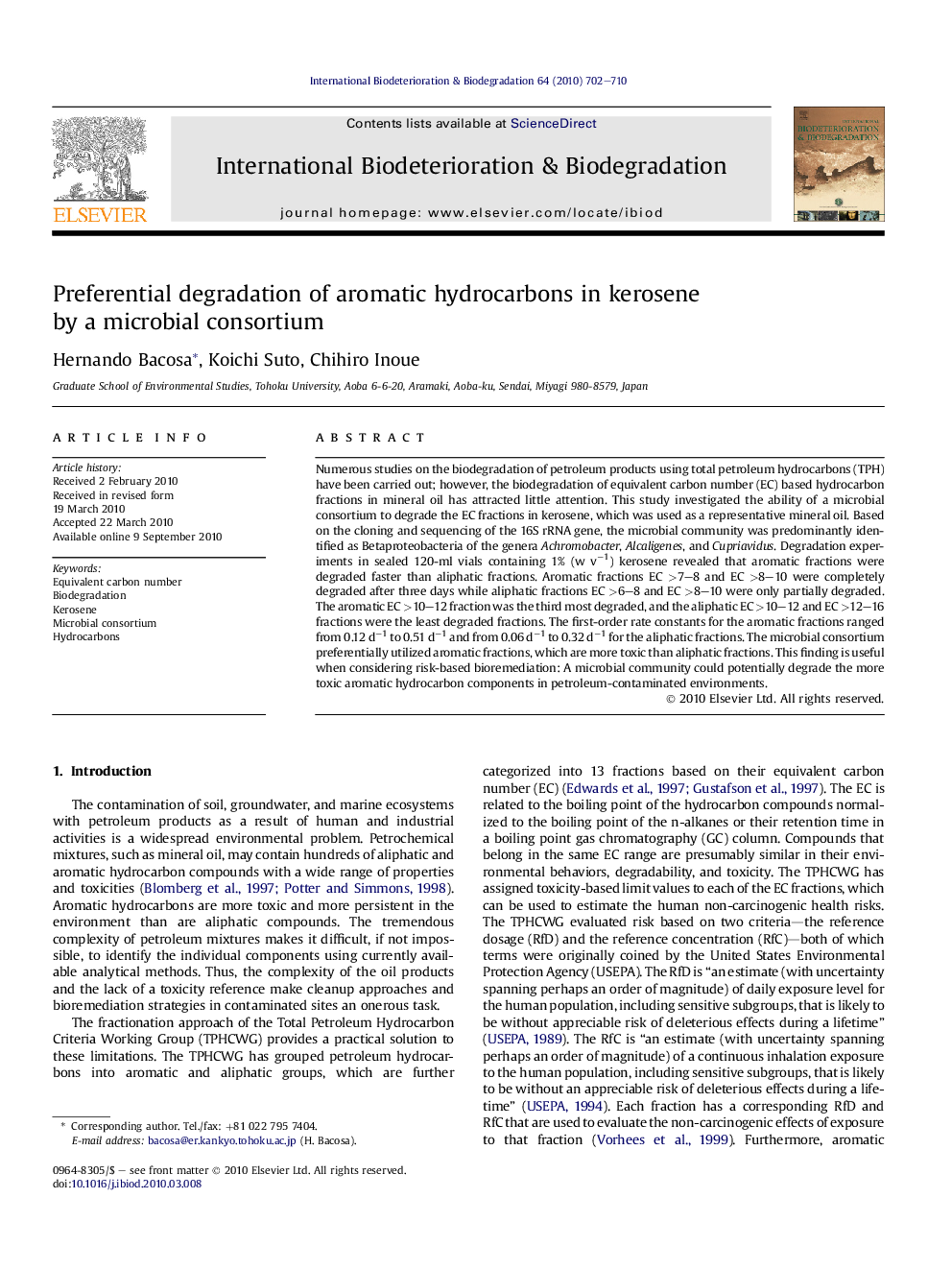| کد مقاله | کد نشریه | سال انتشار | مقاله انگلیسی | نسخه تمام متن |
|---|---|---|---|---|
| 4365387 | 1301757 | 2010 | 9 صفحه PDF | دانلود رایگان |

Numerous studies on the biodegradation of petroleum products using total petroleum hydrocarbons (TPH) have been carried out; however, the biodegradation of equivalent carbon number (EC) based hydrocarbon fractions in mineral oil has attracted little attention. This study investigated the ability of a microbial consortium to degrade the EC fractions in kerosene, which was used as a representative mineral oil. Based on the cloning and sequencing of the 16S rRNA gene, the microbial community was predominantly identified as Betaproteobacteria of the genera Achromobacter, Alcaligenes, and Cupriavidus. Degradation experiments in sealed 120-ml vials containing 1% (w v−1) kerosene revealed that aromatic fractions were degraded faster than aliphatic fractions. Aromatic fractions EC >7–8 and EC >8–10 were completely degraded after three days while aliphatic fractions EC >6–8 and EC >8–10 were only partially degraded. The aromatic EC >10–12 fraction was the third most degraded, and the aliphatic EC >10–12 and EC >12–16 fractions were the least degraded fractions. The first-order rate constants for the aromatic fractions ranged from 0.12 d−1 to 0.51 d−1 and from 0.06 d−1 to 0.32 d−1 for the aliphatic fractions. The microbial consortium preferentially utilized aromatic fractions, which are more toxic than aliphatic fractions. This finding is useful when considering risk-based bioremediation: A microbial community could potentially degrade the more toxic aromatic hydrocarbon components in petroleum-contaminated environments.
Journal: International Biodeterioration & Biodegradation - Volume 64, Issue 8, December 2010, Pages 702–710